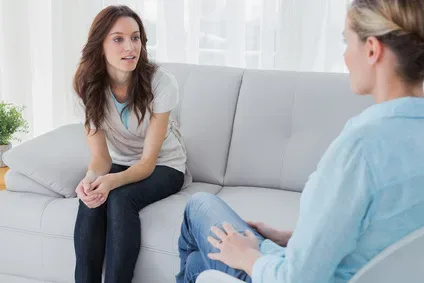
Certain anxiety-based disorders, including generalized anxiety disorder, agoraphobia, post-traumatic stress disorder and obsessive-compulsive disorder, can significantly and negatively impact a person’s thoughts and quality of life due to the amount of stress they are known to cause.
A number of treatment options and therapies exist to help clients learn to cope with and eventually overcome their mental health condition, including the well-known, if not slightly misunderstood concept of exposure therapy.
What is exposure therapy?
Exposure therapy is defined as a type of therapy that slowly but surely helps you face those triggers known to cause you great stress or anxiety. What we have a fear of we often avoid because it makes us anxious, unsure and ultimately uncomfortable.
But with exposure therapy, you are forced to be uncomfortable and learn to be at peace with it. Slowly, by exposing yourself to those anxiety-inducing people, places or situations, you can build up tolerance and resilience until that which used to cause so much pain has a much smaller (perhaps nonexistent) impact on your mental well-being.
What is the goal of exposure therapy?
The goal of exposure therapy is to help people confront and overcome their fears by gradually exposing them to the things that make them anxious or afraid. The rationale behind doing so is this: when a person is afraid of something, they usually try to avoid it, which leads to consequences and continues to fuel their fear.
For example, someone with anxiety may be afraid of socializing, so they avoid people and don’t have any friends as a result. This example illustrates how problematic avoidance of fears can be. Exposure therapy says that in order to lead healthy, fulfilling lives we need to overcome our fears, not avoid them.
What happens during exposure therapy?
During exposure therapy, a therapist guides you through the process of confronting whatever causes you anxiety. There are three techniques one might experience in exposure therapy: in vivo, imaginal and flooding.
In Vivo
In vivo (“in life”) exposure therapy is when a person gradually exposes themselves to anxiety-inducing situations in real life in an effort to desensitize themselves from these experiences.
For someone with social anxiety, this might look like beginning to talk to people online through the video games they play, then beginning to text or talk on the phone with the acquaintances they have made through video games and then eventually meeting these friends in person.
Imaginal
Imaginal exposure therapy is when a person participates in a guided imagery session that prompts them to imagine themselves being exposed to triggers. In doing so, the person is able to start to identify what they would need to do to overcome their fears.
Like in vivo exposure therapy, imaginal exposure therapy is done on a gradual basis. However, because the situation is imaginary, there may be a greater sense of safety than there would be during in vivo exposure therapy.
Flooding
The third type of exposure therapy — flooding — is when a person is exposed to the most anxiety-provoking situation they can identify right away instead of building up to it like in vivo and imaginal exposure therapy do.
An example of flooding would be if someone with social anxiety was instructed to go to a party where there would be lots of people. The theory behind flooding is that fear of a situation can only last for so long. Eventually, the person becomes exhausted by the situation and their anxiety begins to decrease.
Does exposure therapy work?
How much a certain therapy works rely heavily on the person going through treatment. The more effort they put into the treatment, the more they will receive from it. Objectively speaking, however, exposure therapy does have a high success rate.
One study focused specifically on, and found much evidence supporting, the effectiveness of exposure therapy in treating “anxiety disorders including posttraumatic stress disorder, obsessive-compulsive disorder, panic disorder, generalized anxiety disorder, social anxiety disorder, and specific phobia.”
Additionally, it has been proven that clients experienced fewer symptoms immediately following treatment and for a number of years to come. While those who ended therapy before the finish did experience a return of symptoms, those who persevered through the entire process found long-term relief from symptoms.
Exposure therapy treatment options
It’s important to note that all three exposure therapy techniques should be done under the supervision of an experienced, licensed therapist. If you have an anxiety disorder and feel that exposure therapy could be an important component of your recovery, consider The Light Program.
Reach out to our facility anytime by calling 610-644-6464 to learn more.






